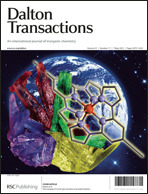This Perspective article discusses three interesting chemical transformations promoted by the octahedral [Re6(μ3-Se)8]2+ cluster core. These include (1) nucleophilic addition of alcohols to cluster-bound nitrile(s) to produce imino ester complexes; (2) synthesis of cluster–imine complexes with geometric specificity by reacting cluster nitrile solvates with organic azides; and (3) preparation and reactivity studies of carbonyl complexes of the cluster. We found that cluster-bound nitrile ligands were activated toward nucleophilic attack by methanol or ethanol, affording predominantly the Z-configured cluster–imino ester complexes, for which a mechanism evoking bifurcated hydrogen bonding interactions involving both the alcohol OH group and two nearest Se atoms of the cluster core was proposed. When reacted with organic azides, cluster-bound nitrile ligands were displaced and cluster–imine complexes were obtained, presumably through the formation of the corresponding cluster–azide complexes, followed by their photodecomposition. Lastly, cluster complexes featuring all-terminal carbonyl ligands were synthesized. Back-bonding interactions were verified, both experimentally and by computational studies. Their thermal and photo-stabilities were also evaluated, so was their reactivity toward methyl lithium for the eventual making of cluster-carbene catalysts. These findings, together with those by others, portend an exciting, new direction in the chemistry of solid-state type transition metal clusters.
![Graphical abstract: Chemical transformations supported by the [Re6(μ3-Se)8]2+ cluster core](/en/Image/Get?imageInfo.ImageType=GA&imageInfo.ImageIdentifier.ManuscriptID=C2DT00007E&imageInfo.ImageIdentifier.Year=2012)
You have access to this article
 Please wait while we load your content...
Something went wrong. Try again?
Please wait while we load your content...
Something went wrong. Try again?
![Graphical abstract: Chemical transformations supported by the [Re6(μ3-Se)8]2+ cluster core](/en/Image/Get?imageInfo.ImageType=GA&imageInfo.ImageIdentifier.ManuscriptID=C2DT00007E&imageInfo.ImageIdentifier.Year=2012)

 Please wait while we load your content...
Please wait while we load your content...